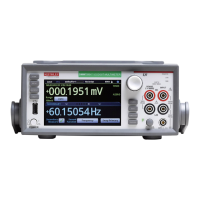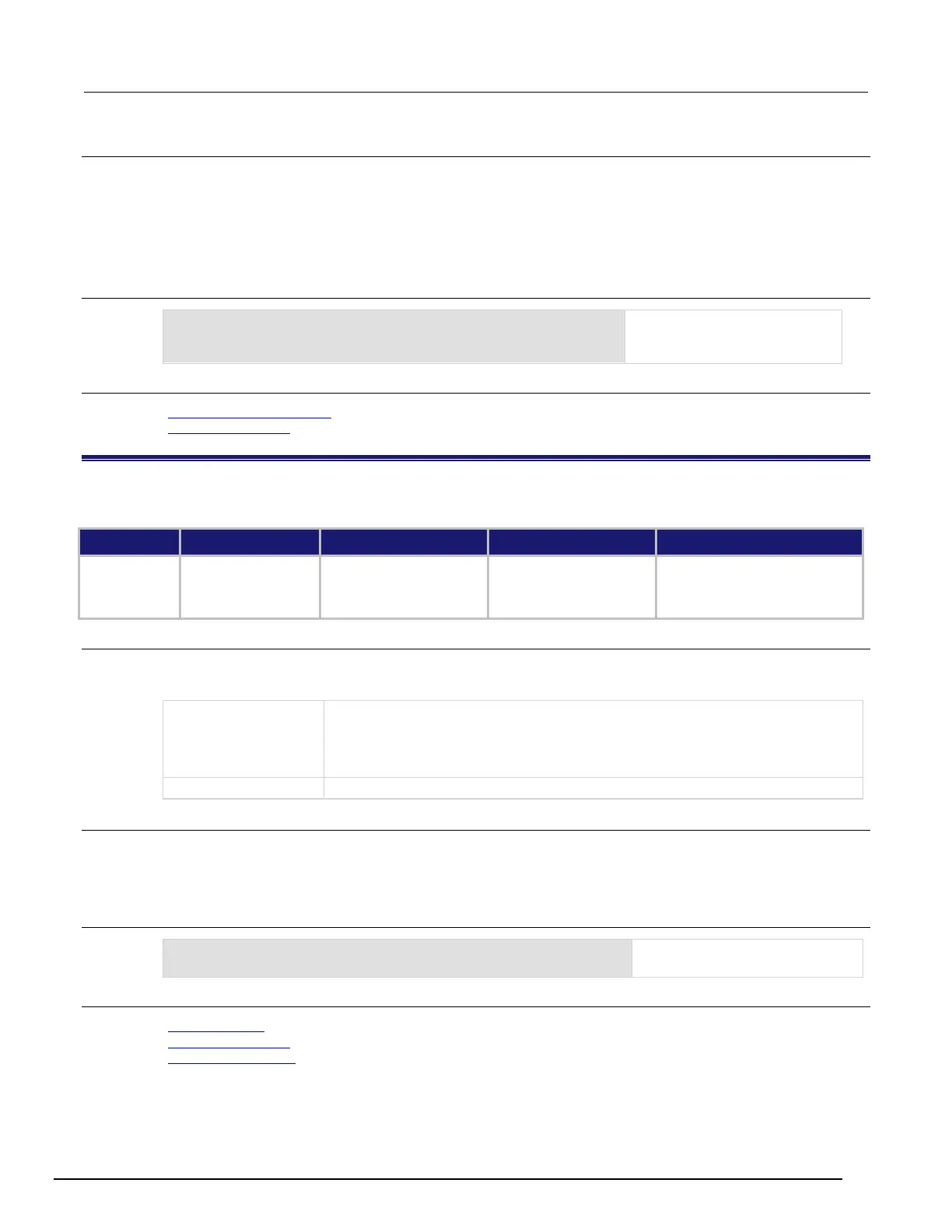7½ Digit Graphical Sampling Multimeter Reference Manual Section 8:
DMM7510-901-01 Rev. B / May 2015 8-339
Details
The trigger event detector enters the detected state when an event is detected. When this command
is sent, the instrument does the following actions:
• Clears the trigger event detector
• Discards the history of the trigger line
• Clears the trigger.tsplinkin[N].overrun attribute
Example
tsplink.MODE_TRIGGER_OPEN_DRAIN
trigger.tsplinkin[2].clear()
Clears the trigger event on TSP-
Link line 2.
Also see
trigger.tsplinkin[N].overrun (on page 8-340)
tsplink.line[N].mode (on page 8-348)
trigger.tsplinkin[N].edge
This attribute indicates which trigger edge controls the trigger event detector for a trigger line.
Type TSP-Link accessible Affected by Where saved Default value
Attribute (RW) Yes
Restore configuration
Instrument reset
Power cycle
Configuration script trigger.EDGE_FALLING
Usage
detectedEdge = trigger.tsplinkin[N].edge
trigger.tsplinkin[N].edge = detectedEdge
• Detect falling-edge triggers as inputs: trigger.EDGE_FALLING
• Detect rising-edge triggers as inputs: trigger.EDGE_RISING
• Detect either falling or rising-edge triggers as inputs:
The trigger line (1 to 3)
Details
When the edge is detected, the instrument asserts a TTL-low pulse for the output.
The output state of the I/O line is controlled by the trigger logic. The user-specified output state of the
line is ignored.
Example
tsplink.line[3].mode = tsplink.MODE_TRIGGER_OPEN_DRAIN
trigger.tsplinkin[3].edge = trigger.EDGE_RISING
Sets synchronization line 3 to
detect rising edge triggers as input.
Also see
digio.writeport() (on page 8-56)
tsplink.line[N].mode (on page 8-348)
tsplink.line[N].reset() (on page 8-349)

